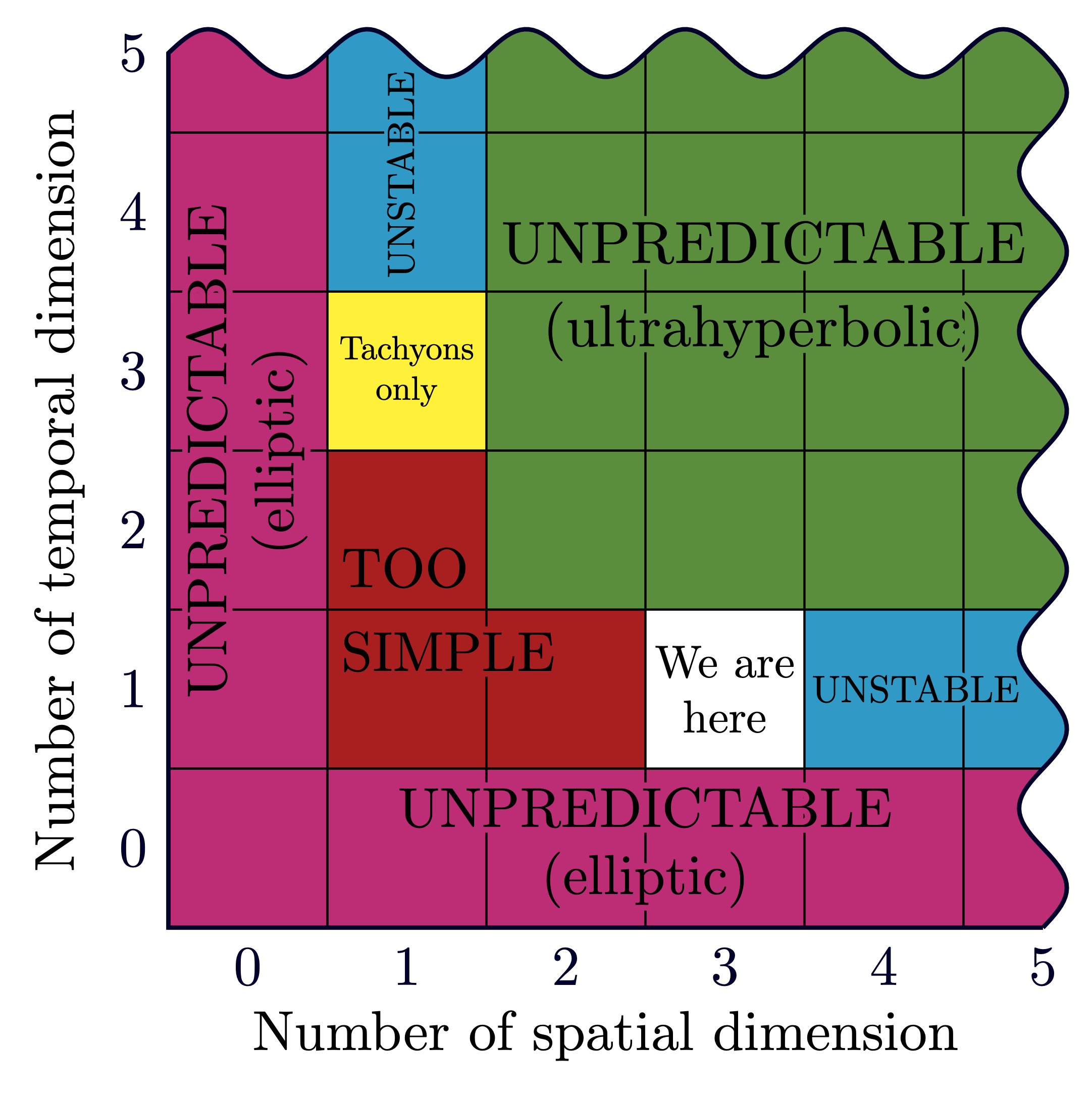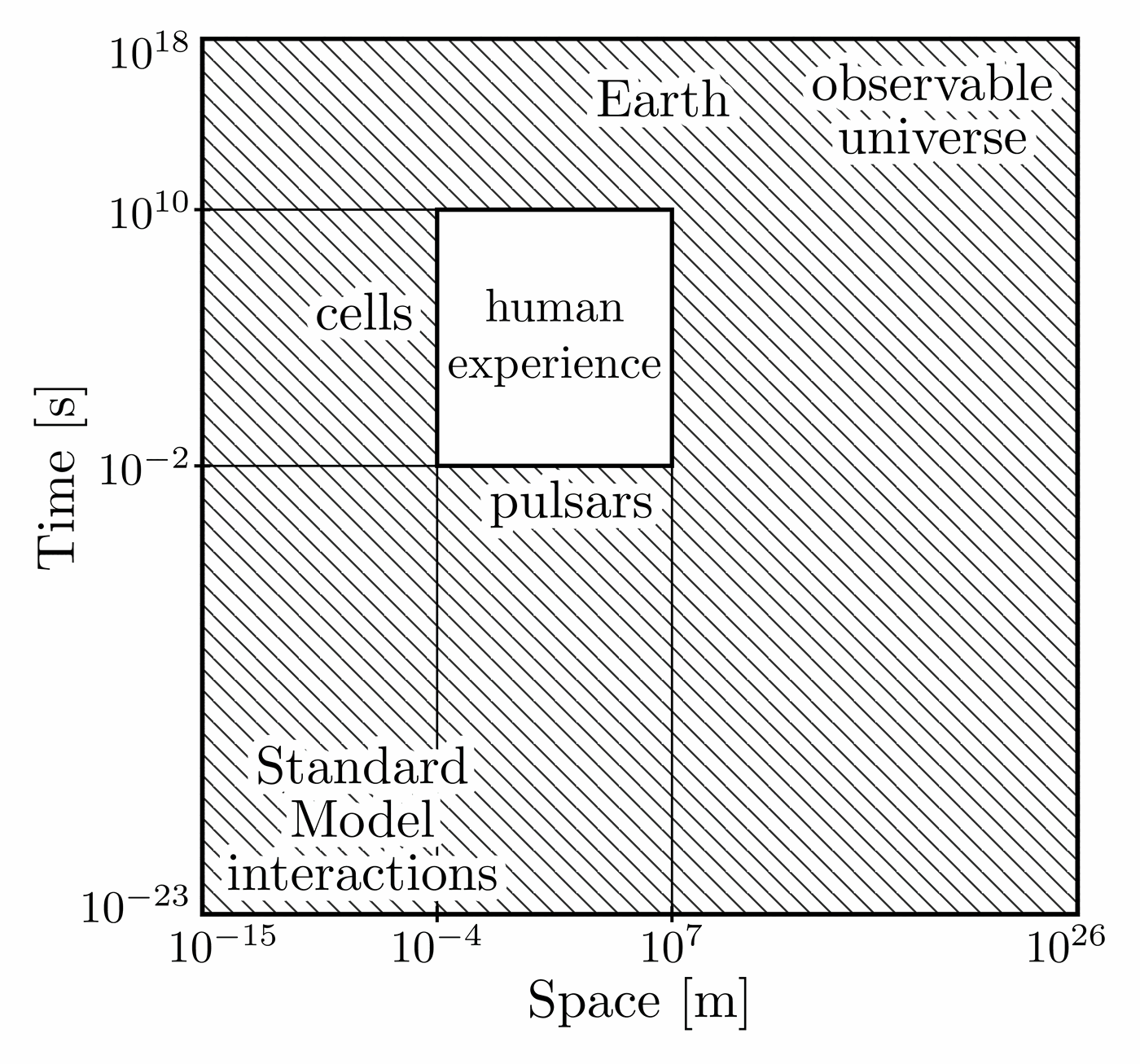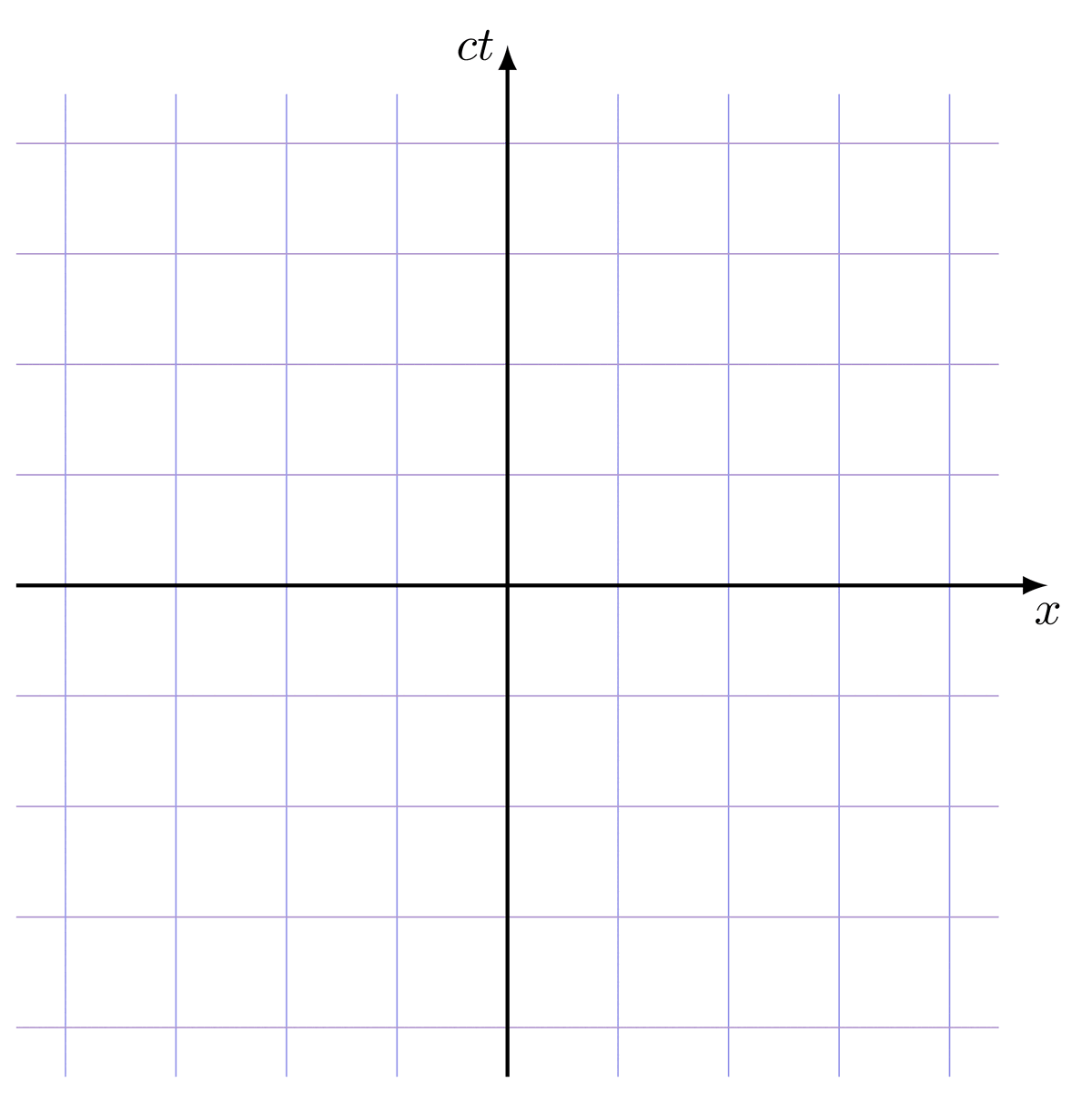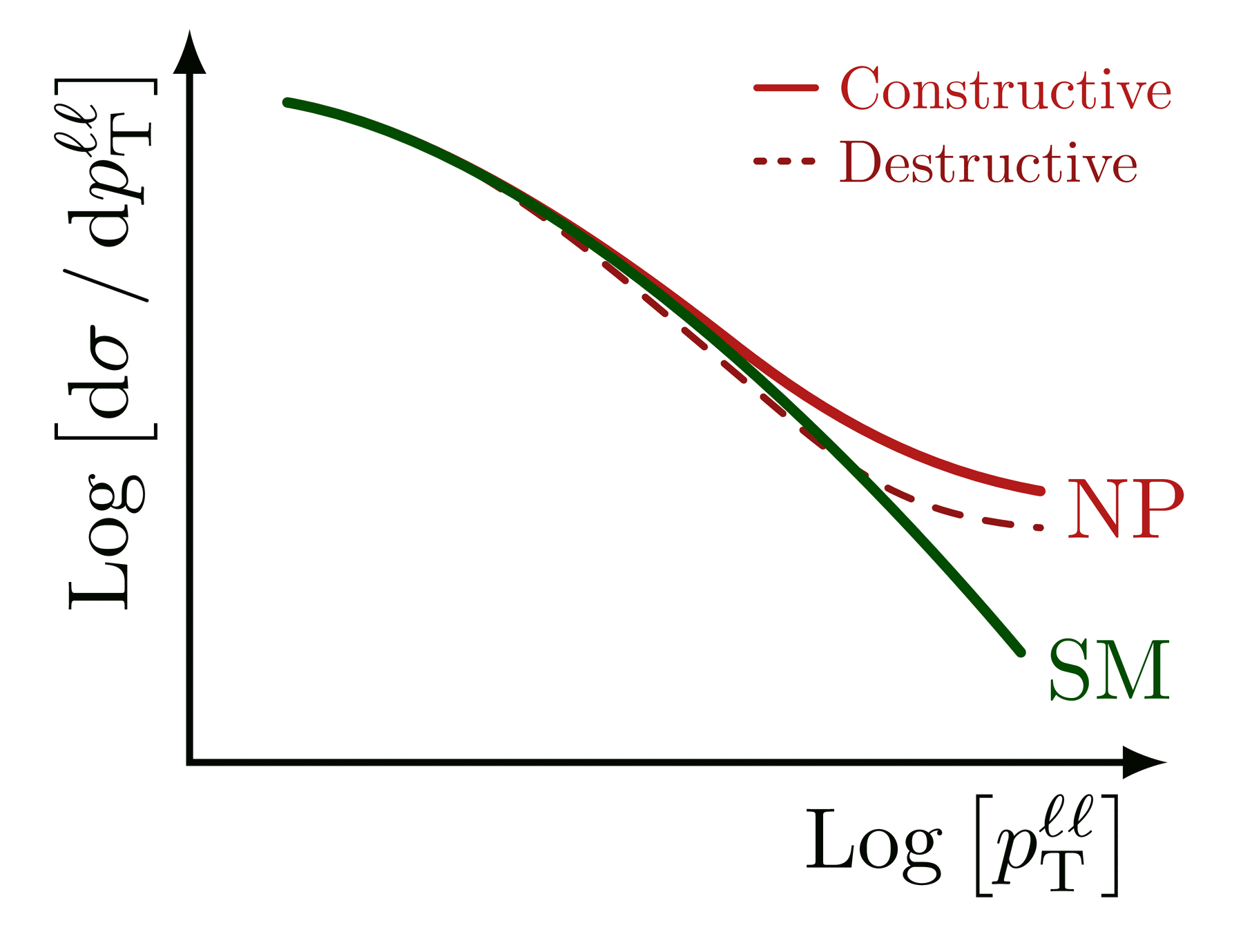Showing the different possible and impossible spacetime dimensions.
Reproduction of Figure 1 in “On the dimensionality of spacetime” (1997) by M. Tegmark (arXiv:gr-qc/9702052).
Edit and compile if you like:
% Author: Izaak Neutelings (June 2022)% Inspiration:% "On the dimensionality of spacetime", Max Tegmark% https://arxiv.org/abs/gr-qc/9702052\documentclass[border=3pt,tikz]{standalone}\usepackage{siunitx}\usepackage[outline]{contour} % glow around text\contourlength{1.1pt}\usetikzlibrary{3d} % for canvas% STYLE\tikzset{>=latex}\tikzstyle{border}=[thick,blue!15!black]\begin{document}% DIMENSIONS\begin{tikzpicture}[scale=1]\def\A{0.15} % amplitude of sine wave cut off\def\xmax{5.5} % maximum dimension\def\sinecut{ % path of sine wave cutoff(\xmax,0) -| (0,\xmax) --plot (\x,{\xmax+\A*sin(deg(2*pi*\x)))}) -- (\xmax,\xmax) --plot ({\xmax+\A*sin(deg(2*pi*\x)))},\xmax-\x) -- cycle}% CHART\colorlet{col-elliptic}{magenta!90!red!95}\colorlet{col-unstable}{cyan!90!black}\colorlet{col-simplist}{red!75!black!90}\colorlet{col-tachyons}{yellow}\colorlet{col-unpredic}{green!45!black!80}\colorlet{col-werehere}{white}\begin{scope}\clip[samples=200,domain=0:\xmax] \sinecut;\fill[col-elliptic] (0,0) rectangle (6,6); % elliptic\fill[col-unstable] (1,1) rectangle++ (6,6); % unstable\fill[col-simplist] (1,1) rectangle (3,3); % too simple\fill[col-werehere] (3,1) rectangle++ (1,1); % we are here\fill[col-tachyons] (1,3) rectangle++ (1,1); % tachyons
Click to download: relativity_dimensions.tex • relativity_dimensions.pdf
Open in Overleaf: relativity_dimensions.tex






